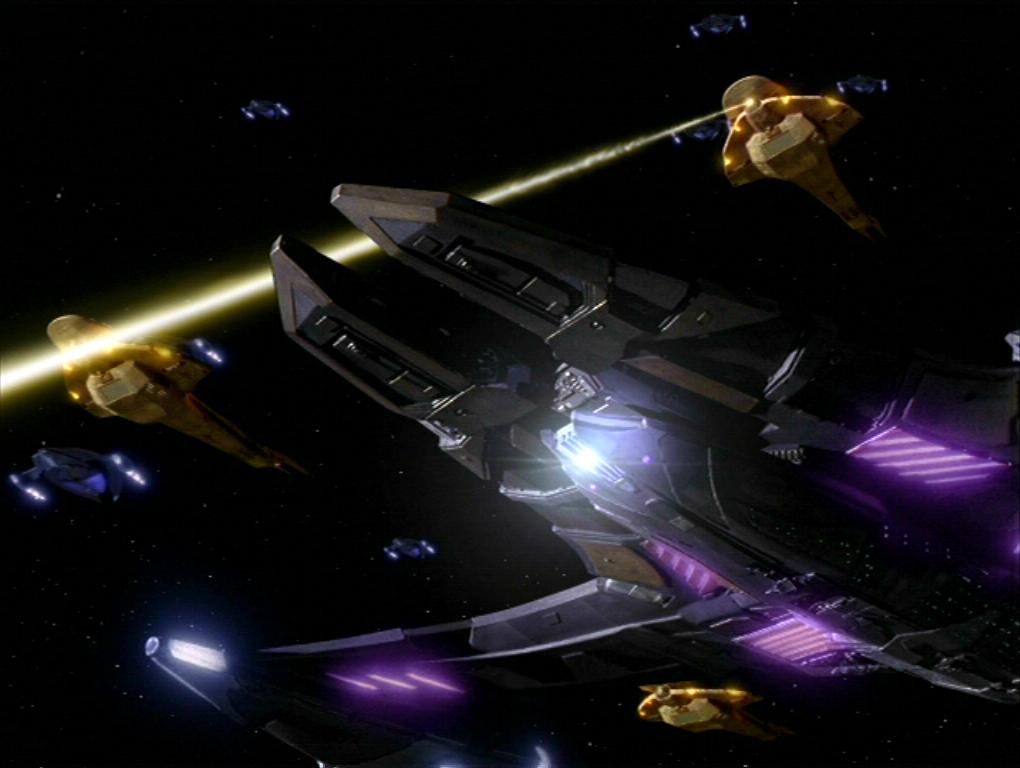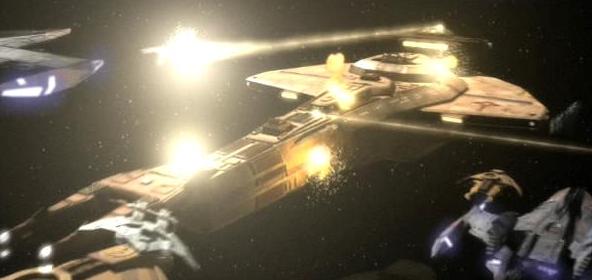Cardassian Union
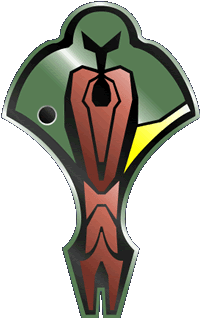
| |
| Cardassian Union | |
| Basic information | |
| Major Species | |
| Capital(s) | |
| Founded |
pre-1871 |
| Warp Capable |
1925 |
| Official Language |
Cardassian |
| Official Currency |
Lek |
| Political Information | |
| Military Branches | |
| Template:Government | |
The Cardassian Union (also referred to as the Cardassian Empire) is the official governing body of the Cardassian people, headed by the civilian Detapa Council and the military Central Command, based on the capital world of Cardassia Prime. The Cardassian Union was once regarded as one of the great powers in the Alpha Quadrant, though it's status as such is now a controversial subject following the Dominion War.
Contents
History
The Detapa Council, Cardassian Central Command and Obsidian Order were jointly established in the 19th century together forming what was eventually known as the Cardassian Union.
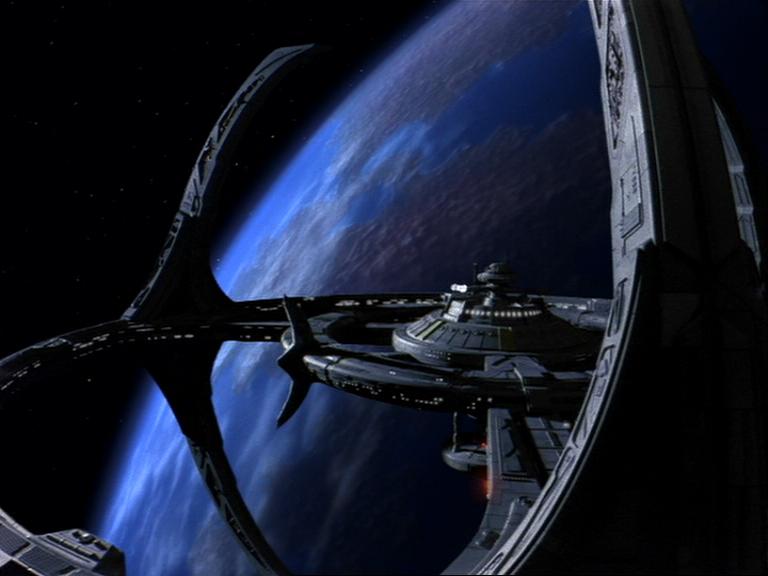
Having assumed a militaristic philosophy after the Hebitian society perished, Cardassians relied heavily on the military's expansion into the galaxy to obtain the natural resources which were scarce on their homeworld. In order to "feed" the population, the military colonised numerous worlds to obtain the resources and in return had almost complete power over the people. This arrangement satisfied both the military and the civilian population for many years. However, as the Cardassian Union continued to expand over the decades, so did the military's requirements. Eventually the military was consuming the majority of the obtained resources and leaving only scant remnants to Cardassian citizenry. This led to a period of social discontent, as famine and disease once again struck Cardassia, as it had with its ancient civilization. To compensate, the military conquered neighbouring planets and forced their native people to work as forced labourers. The most well known of these occupations was that of Bajor in 2328. The Occupation effectively ended in 2369 due to political pressure from the Federation on top of the constant terrorism and guerrilla warfare from the Bajoran Resistance.
Eventually their expansion brought them into conflict with various powers in the Alpha Quadrant, including the Klingon Empire and the Federation, resulting in various skirmishes and wars, eventually ending with the signing of a peace treaty in 2367 and the creation of a Demilitarized Zone three years later. This was a perturbed peace and minor conflicts continued between both sides from time to time, including the Cardassians attempt to take Minos Korva by negotiating the release of Captain Jean-Luc Picard. The layout of the DMZ also contributed to the tensions. Due to the change in borders some Federation worlds became Cardassian territories and vice versa. Many of the people, whose worlds were turned over to the Cardassians, did not wish to leave and were granted permission to remain on their worlds. Disgruntled by the treatment they received from the Cardassians some of the citizens decided to revolt. This gave birth to the Maquis.
Degeneration & Restoration
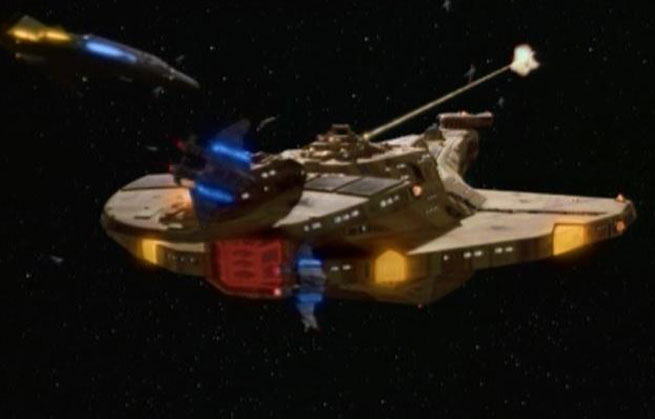
After the discovery of the large, hostile empire in the Gamma Quadrant known as the Dominion in 2370, and the following unwillingness by any of the major Alpha Quadrant powers to take firm action, Enabran Tain - the retired leader of the Obsidian Order - took it upon himself to see Cardassia's involvement in preventing a major war in 2371. With the help of the Tal Shiar, Tain was able to develop his own small fleet in the Orias system which he would use later that year in an attempt to wipe out the Dominion's rulers; the Founders. His plan was ultimately foiled by a Changeling infiltrator, resulting in the disastrous Battle of the Omarion Nebula. The battle caused the Obsidian Order to completely collapse, which coupled with continued attacks by the Maquis terrorists allowed for the Cardassian dissident movement to overthrow the Central Command's authority the following year. The movement saw the restoration of the Detapa Council and civilian rule after centuries of military dictatorships.
Having been suppressed for so long, the civilian population's ability to restore the Detapa Council was believed to be influenced by the Founders in the eyes of the Klingon Empire. Because of this, as well as Chancellor Gowron being influenced by an actual Changeling, the Klingon Empire launched an unprovoked and abrupt invasion of the Cardassian Union, thus beginning the Klingon-Cardassian War. The war devastated Cardassian infrastructure and crippled a large portion of their fleets.
In 2373, the Dominion suddenly invaded the Alpha Quadrant with dozens of ships coming through the Bajoran wormhole. The Federation was preparing for the worst assuming the fleet was going to begin an interstellar war by attacking Deep Space 9. However, the fleet immediately changed course and headed directly for Cardassian space. Shortly thereafter, Gul Dukat revealed that he had secretly negotiated an alliance with the Dominion over the past few months and made Cardassia an official member, only weeks prior to the Dominion's entry of the Alpha Quadrant. The Detapa Council became completely powerless with Cardassia formally annexed and Dukat as the designated leader of the Cardassian people. Dukat later "justified" his actions by saying the alliance with the Dominion would restore Cardassia to its former glory, promising to push every Klingon ship from Cardassian territory and wipe out every Maquis colony in the DMZ. Dukat made good on his promise, for within three days every Maquis colony was destroyed, with only a few members able to evade capture or death, and the entire Klingon invasion force was in full retreat.
Dominion War
With the Cardassian Union's borders returned to their pre-war state, the Union had successfully been raised to a first-rate power in the Alpha Quadrant. However, Dukat's personal ambitions, combined with the Founders' desire to bring order to the galaxy, meant that an interstellar war was inevitable. Since the Dominion required constant reinforcements of ships, supplies, troops and ketracel-white from the Gamma Quadrant to be able to conquer the entire Alpha Quadrant, the Federation decided to mine the entrance of the wormhole to prevent the strength of the Dominion from growing. This move was the provocation the Dominion needed to start a full-scale war against the Federation without coming across as the aggressors. The Dominion then sent a fleet of ships to capture Deep Space 9 and prevent the minefield from completion which resulted in Dukat retaking the station. Thus, the Dominion War began.
For the first few months of the war Cardassia and the Dominion were unmatched on all fronts, constantly forcing the Federation and Klingon Empire to retreat. The utter failure of the Federation's Seventh Fleet at Tyra was one of the many engagements resulting in complete success for the Dominion. At the current rate of success it was only a matter of time before Earth and the rest of the Federation became completely conquered by the Dominion. However, a bold attack to re-take Deep Space 9 saw the first engagement of the war where the allies were successful. The sudden turn of events caused the capture and mental breakdown of Gul Dukat. It was after this that Cardassians began to lose their status as equals with the Vorta and Jem'Hadar in the Dominion.
Following the defeat at Terok Nor, Damar was placed as the new leader of the Cardassian people. However, Damar's position gradually became nothing more than a simple formality, with the Female Changeling and Weyoun running a de facto government. Over time, Damar was forced to obey Weyoun on almost all political and military decisions, including issuing orders contrary to those that Damar had initially; usually to great cost in Cardassian lives and military assets. Damar gradually realized that he was simply running a puppet government under Dominion regime and that Cardassians were becoming second-class citizens within their own territory. When the Female Changeling negotiated with the Breen to join the Dominion in 2375, she made territorial concessions on behalf of Cardassia. Damar, forced to sign the negotiations as the designated leader of Cardassia, realized his power had been completely usurped. It was then that Damar began his rebellion against the Dominion oppressors.
The military rebellion was later destroyed when it was betrayed during a planned meeting on Cardassia. However, Damar was able to continue fighting the Dominion by instigating a wide-scale revolution on Cardassia Prime amongst the civilian population. During the Battle of Cardassia, the revolutionaries were able to cause a planet-wide blackout, causing confusion and loss of communications between the Dominion headquarters and their forces in space, enabling the allies to defeat the Dominion forces and force them to retreat to Cardassia Prime for the final stand of the war. When the Dominion destroyed Lakarian City in retaliation for the blackout, the remaining Cardassian military forces switched sides, helping the Federation Alliance defeat the remaining Dominion forces and bring an end to the war. However, the Cardassian military switched sides too late: by the end of the Dominion War, Cardassia Prime was in ashes, devastated by orbital bombardment and Jem'Hadar raids by the Dominion, who were ordered to wipe out the Cardassian species for their betrayal during the uprising and the battle in orbit.
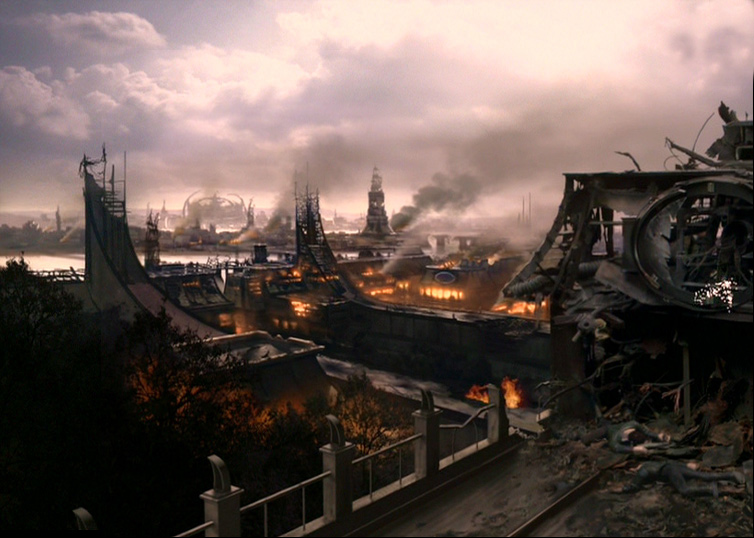
Over eight hundred million men, women and children were slaughtered in the planet-wide genocide. The Cardassian military was reduced greatly from two years of total war and casualties with the Federation Alliance, an entire Order was wiped out from a single engagement, and their economy was crippled. With Damar, the inspirational leader of the Rebellion dead, Cardassia took a big blow that further deteriorated the situation and lead to an even deeper fall into the inevitable demise. Cardassia, a once proud, powerful and unrelenting force in the Alpha quadrant, had once again become a planet plagued with famine, death, disease and destruction, leaving the remaining Cardassians to rebuild it and pick up the pieces amongst the ruins.
Restoration and Recovery
In the year following the end of the war, Cardassia relied heavily upon the Federation for assistance; the Klingons and Romulans being more interested in captured territories and the Breen retreating back behind their own pre-war borders, laying claim to a few outlying Cardassian worlds as they did so. It took almost a full year before any cohesive form of government could rise again from the ashes of the destruction wrought upon the populace by the Jem'Hadar. The new Cardassian government revived the prospect of civilian rule under the Detapa Council, this time led by a Castellan; a senior councillor designated as head of state. The inaugural Castellan was a former military officer who turned towards the rebellion after Legate Damar's return to Cardassia Prime; Gul Gerim Ertal. Ertal's government was voted to power by ballot in 2376, with the opposing party the more traditionalist Directorate, who favoured a return to military rule and believed that anything less would be too weak a government to be able to successfully restore Cardassia to its former state.
Castellan Ertal was able to re-form the government and begin to bring together a new Central Command and reform the various bureaus and agencies which were required to run the former governments. Due to the usurpation of power and subsequent attempt at genocide by the Dominion occupying forces, this process was a lengthy one, and the Cardassian government was only just beginning to show the level of coordination and confidence that its previous institutions had ten years later. In 2386, Castellan Ertal sent former Obsidian Order agent Elim Garak to Earth to act as Cardassian ambassador to the Federation under the newly reformed Cardassian Foreign Ministry.
Government
The Cardassian Union was formed under a treaty that established a power-sharing agreement between the Cardassian Central Command and the Obsidian Order. Friction always existed between the two organizations as the Central Command worked to expand the reaches of the Union and the Obsidian Order worked to suppress it. The civilian Detapa Council was established to serve as the chief governing body between the two branches, however, in practice, the Council was virtually powerless for much of the Union's history.
Through their entire expansionist period, both the Central Command and the Obsidian Order intelligence agency often operated with virtual autonomy. The two agencies often vied with each other over governmental control and policies. A special military liaison office was present that served to link the Central Command to that of the Obsidian Order. It was effectively considered a neutral position though it had little power over the direction of the Order.
In late-2371, following the fall of the Obsidian Order at the Battle of the Omarion Nebula, the Detapa Council and the Cardassian dissident movement overthrew the Central Command, establishing control over the government but sparking suspicions of a Dominion-influenced coup and leading to a Klingon invasion.
In 2373, Gul Dukat secretly negotiated with the Dominion for the Cardassian Union to become its newest member. The Detapa Council was overthrown and Gul Dukat established himself as ruler of the Cardassian Union. This arrangement was later revealed to be inaccurate as Dukat (and his successors Legate Damar and Legate Broca) were actually subservient to the Vorta and the Founders.
Following the defeat of the Dominion in 2375, the Cardassian government was left in shambles and was practically propped up by aide from the Federation, who were now occupying Cardassian territory, along with the Romulan Star Empire and the Klingons. By the following year, a civilian government had once again begun to form under a new Castellan of the Detapa Council; Gerim Ertal. The Romulans pulled out of the peaceful occupation in late 2378, upon the rise of Praetor Hiren, who felt that the occupation did nothing to serve Romulan needs or desires. The Klingons remain in the occupation effort alongside the Federation, however their humanitarian role had never been as extensive as the Federations, and following growing tensions between the Federation and the Klingon Empire by 2388, their role in the region is uncertain.
Over the decade and a half following the rise of the new Cardassian government, various political factions formed within the Union; some in favour of more diplomatic freedoms and closer alliances with the Federation; others advocating a complete break in diplomatic contact with the Federation and others a return to military rule under the Central Command. Castellan Ertal, despite having won in his re-election campaign in 2384, has faced three assassination attempts on his life over his time in office.
The highest court of justice in the Cardassian Union is the Cardassian Supreme Tribunal. The Cardassian Articles of Jurisprudence provide the laws governing treatment and rights of prisoners in the Cardassian justice system, which was notorious throughout the Alpha Quadrant. The justice system in use by the Cardassian Union for much of its history decided the verdict and the sentence prior to the actual trial, and allowed very little room for defence. Following the fall of the Dominion, the Federation Occupation encouraged a change in this system of justice, but were only mildly successful; not willing to force the Cardassians to alter their culture and risk being seen as aggressors in the same light as the Cardassians during the Occupation of Bajor. By 2380, the Cardassian legal system still decided the verdict and sentence prior to the trial, but allowed a strong defence case to overturn the ruling.
State intelligence
To ensure that the population remained completely loyal to the State, the Cardassian Obsidian Order – the Union's primary intelligence agency until 2371 – watched over the people. It was said that a Cardassian citizen could not sit down to a meal without each dish being duly noted and recorded by the Obsidian Order. Like the military, the Obsidian Order was supposed to submit to the Detapa Council, but in practice, the Order had far more authority. Even members of the Cardassian military were not immune to Obsidian Order inquiries. Almost every Cardassian lived in fear of the Order, as its constant surveillance led to the sudden eliminations of numerous "traitors."
After the Battle of the Omarion Nebula, the Obsidian Order ceased to exist. However, after Cardassia joined the Dominion in 2373. the Order's role was replaced by the Cardassian Intelligence Bureau, which was just as effective. The Bureau still elicits the same sense of fear in the Cardassian citizenry that the Obsidian Order once did, though the Federation has tried to encourage a scaling back of the practices that it considers to be unjust.
Agencies
- Cardassian Bureau of Identification
- Cardassian Central Archives
- Cardassian Central Command
- Cardassian Communications Service (or "Information Service")
- Cardassian Finance Ministry
- Cardassian Intelligence Bureau
- Obsidian Order (former)
- Cardassian Ministry of Justice
- Cardassian Ministry of Trade
- Cardassian Science Ministry
- Cardassian Supreme Tribunal
Foreign Relations
- Federation-Cardassian Treaty (2370)
- Bajoran-Cardassian Treaty (2371)
- Treaty of Bajor (2375)
Military
The Cardassian military is led by the Central Command and the Cardassian forces are divided into several orders. The Obsidian Order, the former intelligence agency of the Union, was sometimes referred to as part of the structure of the Cardassian military orders, but in reality operated on an entirely separate agenda. After the Obsidian Order's destruction in the 2370s, the organisation was replaced entirely by the Cardassian Intelligence Bureau. (See also: Cardassian ranks)
The modern Cardassian Union employs a modern military made up of both males and females. The actual size and percentage of males and females serving is unknown, but it is primarily male. Ordinarily the Cardassian military is a volunteer force, but during emergencies Cardassians can be drafted.
Organization
The Cardassian military normally is administered by the elected Detapa Council. Under the Detapa Council is Cardassian Central Command, made up of career military, which often operated autonomously until the end of the Dominion War in 2375. Under the Central Command are a number of semi-autonomous "Orders" which are roughly similar to a numbered fleet in function. Each order seems to recruit its own members and while no hierarchy exists, some orders are more prestigious than others.
Tactics
The Cardassian military makes extensive use of booby traps, especially in retreat and tactical withdrawals. The Cardassian military tends to favour covert action and deception over direct confrontation. During their attempt to take over Minos Korva, they hid several vessels in the McAllister Nebula and waited to see if the Federation would trade the planet for the release of Captain Jean-Luc Picard before striking. During the Klingon-Cardassian War, the Cardassians were able to win many engagements against the Klingons by implementing decoys with sensor ghosts and holo-projections, before striking their confused enemies. When direct confrontation is unavoidable, the Cardassians employ a number of well coordinated fighters in tight formation in order to cover for any relative technological weaknesses. A typical Cardassian plan is complex and is said to consist of a "plan within a plan within a plan leading to a trap."
Economy
During the 24th century, the Cardassians maintained trade alliances with the Valerians and Klaestrons. They were also known to use the Xepolites and Lissepians as trade intermediaries in arrangements that may otherwise have been considered illegal outside of the Union.
Many of the primary worlds in the Cardassian Union lack an abundance of natural resources. For this reason, the Union relied heavily on strip mining resources from neighbouring planets which were not part of other Alpha Quadrant powers, such as Bajor. As opposed to making trade alliances with them, the Cardassian Central Command would often occupy worlds and use the populations as forced labourers.
This practice was no longer a viable solution following the end of the war and the Federation Occupation, but the Cardassian worlds were still in desperate need of resources in which they were lacking, which created an economy of want, as a contrast to the Federation's economy of surplus. Cardassia relies heavily upon imports to sustain itself, and has very little to offer in return.
The lek is the common form of currency within the Union.
Technology
In 2367, Cardassian technology was notably inferior to that of the Federation. A Cardassian warship was easily destroyed by the USS Phoenix, even when the warship had the ability to penetrate the Phoenix's shields. Cardassians on board the USS ''Enterprise''-D made several comments about the superiority of Federation technology, notably the ship's transporter technology, as well as the vessel's sensors, which were able to detect the classification of Cardassian ships at long ranges, an ability that Cardassian sensors did not have. At this time, Cardassians did possess the ability to mask the contents of their supply ships from the ''Enterprise'''s scans.
Nevertheless, the Cardassians were formidable opponents. While their shield technology matches unfavourably against both Federation and Klingon weapons, Cardassian weapons are quite capable in their own terms. All Cardassian warships generally rely upon a single large, powerful forward facing phaser array, similar to Klingon and Romulan ship design philosophy, with smaller phaser emitters placed at other positions along the ships hull, but with a far lower yield, and which appear to be utilised mostly in a defensive posture. In battle, Cardassian ships also employ missile weaponry like photon torpedoes.
The bulk of the Cardassian military consists of Galor-class ships, which are outclassed by Galaxy- and Nebula-class Federation ships, though they had little trouble dealing with Miranda- or Excelsior-class vessels. Furthermore, despite the Federation's superior vessels, the Federation-Cardassian War saw a stalemate between the two powers for a prolonged period of time, revealing that, despite the technological advantage the Federation had, the Cardassians were an even match for the interstellar organization. Following the conclusion of this war, the Cardassians began to employ the superior Keldon-class, which first saw service in 2371, though the Galor-class remained the more dominant vessel in the Cardassian military right through the Dominion War.
By the late 24th century, the Cardassians used beritium, dolamide, kelindide, rhodinium and uridium in the construction of their ships and military equipment.
Territorial claims
The Union Territories were noted to have borders with the Talarian Republic, Breen Confederacy and the Tzenkethi Coalition. In addition the Ferengi Alliance and the United Federation of Planets shared a border with the Cardassian Union. In the 2330s, the Union was also adjacent to territory belonging to the Ubarrak Primacy; the two powers both maintained a presence in the "Oblivion" sector.
In 2368, territories near the borders of the Union included the Federation worlds Minos Korva and Solarion IV, the neutral planets Torman V and Tohvun III, and the Valo system, located approximately 13,000 kilometers from the border in neutral territory. Federation facilities near the border at this time included Starbase 211, Lya Station Alpha, and the Argus Array. Sectors 21305 and 21503 are on the Federation side of the border.
Cardassian territory was at least partially re-defined in 2369, as the Cardassians withdrew from Bajor. In 2371, Prophet's Landing was the Bajoran colony closest to the new Cardassian border.
Cardsssian territory also bordered Romulan space during the Dominion War, as it included various territories captured from the Federation. Their territories met in the Glintara sector.
Following the Dominion War, Union territory was reduced greatly, and was limited to the Algira, Almatha, Cardassia and Dorvan sectors. Categories:Species



